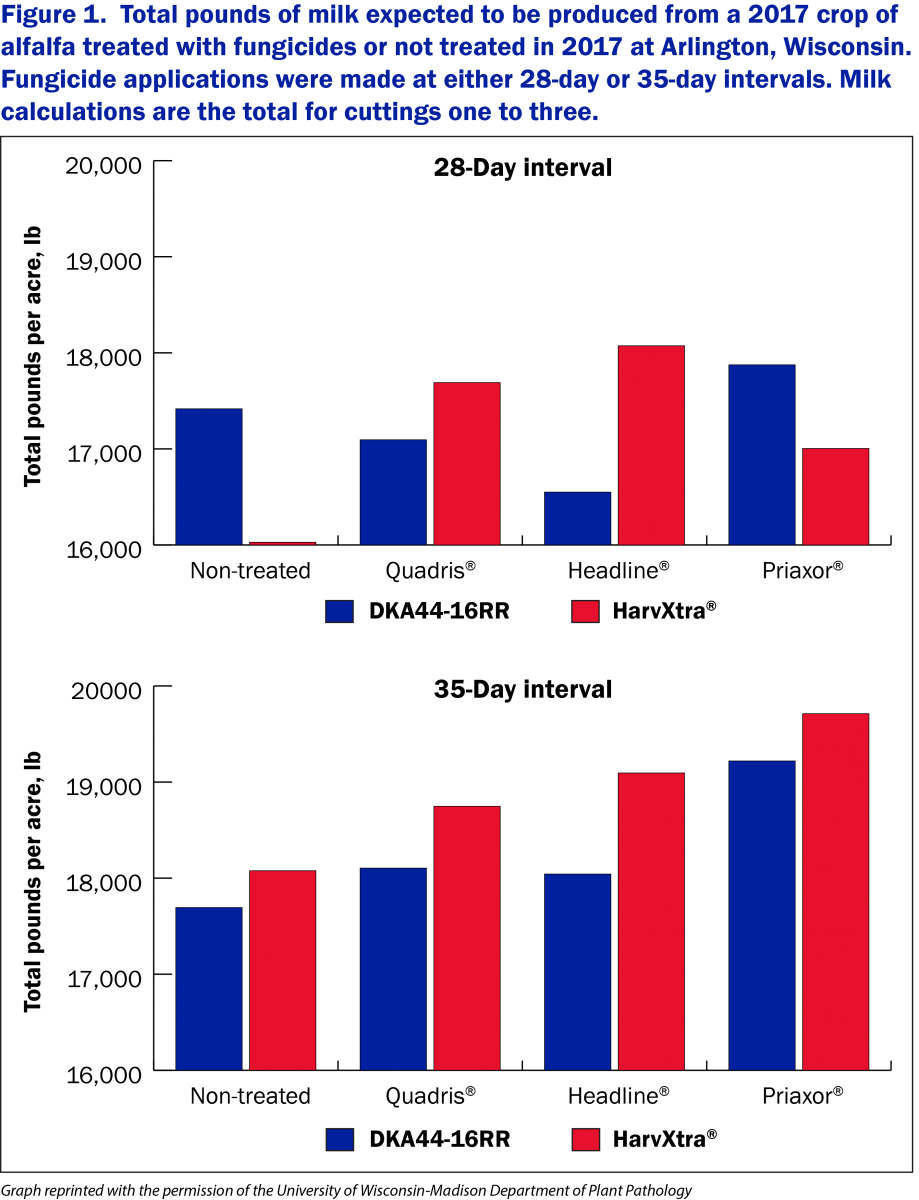
Optimize the use of foliar fungicide on alfalfa – Dr. Damon Smith, University of Wisconsin-Madison
In the last 10 years, foliar fungicide applications have gained popularity in alfalfa meant for dairy production. These applications can be used to target foliar diseases, but they are now also being used to boost plant health and to protect yield potential.
 By Dr. Damon Smith, University of Wisconsin-Madison assistant professor and extension specialist
By Dr. Damon Smith, University of Wisconsin-Madison assistant professor and extension specialist
Within the last 10 years, foliar fungicide applications have gained popularity in alfalfa meant especially for dairy production. While these applications can be used to target foliar diseases that can result in premature leaf defoliation, fungicides are also being used to boost “plant health” and protect yield potential.
In the late 1980s, foliar fungicides and alfalfa were investigated by Broscious and Kirby. In that study, using older fungicide chemistries, they identified some programs that reduced foliar disease and, subsequently, increased yield. Additional work in the early 1990s demonstrated that cutting intervals less than 30 days in alfalfa can be a method of controlling foliar diseases in the crop (Duthie and Campbell, 1991). For many of the major foliar diseases of alfalfa, severity doesn’t increase to a level that causes significant defoliation until around 30 days, under typical weather conditions in the Midwest.
In the mid-2000s, newer fungicide chemistries were developed and labeled for use on alfalfa. In our initial work from 2011 to 2014 using these new chemistries, we learned that fungicides could suppress foliar disease and offer slight yield increases over untreated plants. This work concentrated on products like Quadris® and Headline®, some of the first “new-generation” fungicides labeled for alfalfa. While dry matter (DM) yield increases were often detectable, these yield increases were marginal at around 0.11 tons of DM per acre per cutting for the Headline fungicide product. Depending on the markets for prime-grade hay, the probability of offsetting the cost of the product and application ranged between 40 to 50 percent per cutting for hay selling between $150 to $175 per ton. This assumes that the cutting interval is between 28 and 32 days.
In 2015, we shifted focus to look at implementing fungicide programs on alfalfa with longer durations of cutting. The main reason for this was reduced- and low-lignin alfalfas were coming on the scene with the intent to intentionally lengthen the duration of cut to reduce the number of cuts per season while maintaining quality and yield. We also added the fungicide Priaxor® in our testing. We compared a conventional Roundup Ready® (RR) alfalfa variety with a reduced-lignin RR variety and compared a conventional 30-day cutting interval to a 35- or 40-day interval. After three years of data, we learned that increasing the cutting duration from 28 to 30 days to 35 to 40 days resulted in increased likelihood of seeing a return on fungicide investment in alfalfa, especially when the alfalfa crop was kept on-farm and fed for dairy production. In fact, the reduced-lignin alfalfa tended to respond more positively to fungicide application in long-duration cutting systems compared to the conventional RR variety, as is evident in Figure 1 below.
If you have adopted a reduced- or low-lignin alfalfa variety in your production system, the likelihood that it responds to a foliar fungicide will be higher when the cutting duration is greater than 30 days. If you plan to cut these varieties on an interval of 28 days or less, foliar fungicide might not be needed. Regardless of variety, the likelihood to recover the investment in foliar fungicide is more in your favor when cutting durations are longer than 30 days.

| Category: |
Feed quality and nutrition Forage Foundations Forage harvesting |

